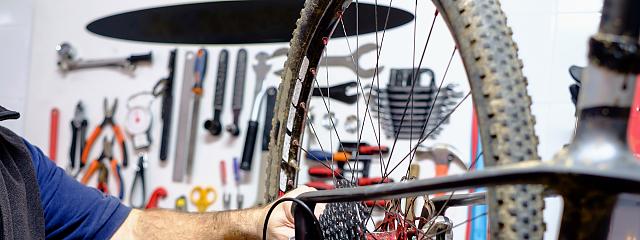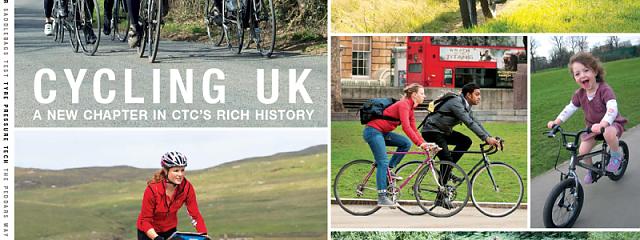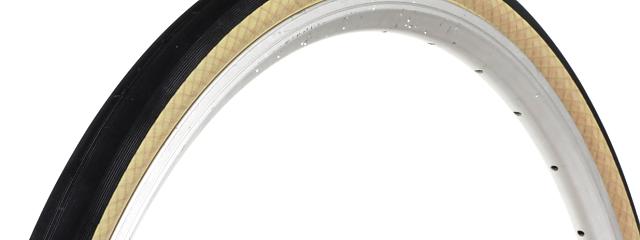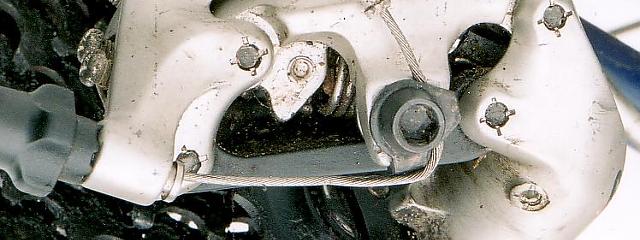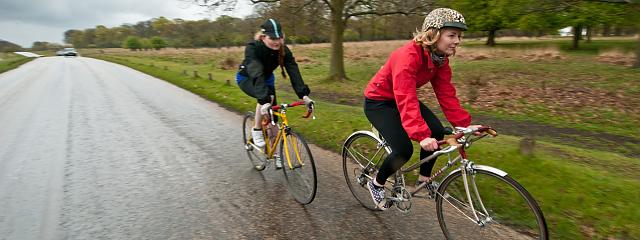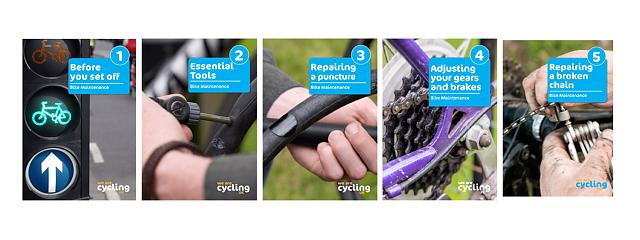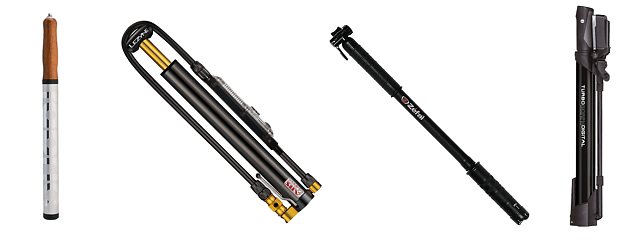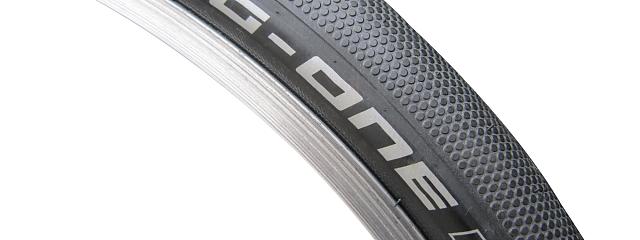
What's the best cycle tyre pressure?
What's the best cycle tyre pressure?
Let’s talk about tyres: fatter tyres, to be precise. They are enjoying a resurgence in popularity right now. There was a time, back in the 1930s, when both leisure and utility cycling were massively popular, when all but racing cyclists rode tyres considerably fatter than the 25mm – or about one inch – width that has recently found itself the new road bike norm.
Not so long ago, tyres as narrow as 19mm were fitted as standard to machines sold as suitable for road competition, and while this practice has largely died out, that of riding around on narrow tyres suited to racing is firmly entrenched in road cycling culture.
It dates from the middle of the 20th century, when leisure cycling began losing ground to the motor car. Racing cyclists, who found they could ride narrower, lighter tyres on the newly improved road surfaces of a Europe emerging from war, provided the example for those who stuck with cycling as a pastime – and the fast, wide tyres favoured by touring cyclists before the conflict became largely a memory. The road bike’s narrow tyres are the logical conclusion of that process and of the desire of enthusiast road riders to emulate racing cyclists.
Most cyclists don’t ride at anywhere near the speed of a road race, which is about 25mph, and would be better off on wider tyres.
Richard Hallett, Cycle magazine Technical editor
Pneumatic suspension
Most leisure cyclists don’t race. Most don’t ride at anywhere near the speed of a road race, which is about 25mph, and most cyclists, sportive riders included, would be better off on wider tyres. How much wider is hard to say. It helps to look at the fundamentals of pneumatic tyre operation.
Essentially, the tyre provides suspension. It is very effective; a bicycle with some sort of mechanical suspension riding on solid tyres is no match for a rigid-framed bike on pneumatics – even those that are over-inflated.
Any suspension is primarily intended to isolate the vehicle from surface irregularities, otherwise it would move vertically over each bump. The energy required to do this is taken from forward motion and is not fully regained as the vehicle drops back down on the far side of the bump.
A solid rubber tyre may compress enough to soak up small surface imperfections, but even a thick layer of the material is only compressed locally and can’t get out of the way of a bigger bump. In a pneumatic tyre, the entire volume of the air chamber is reduced by localised compression, resulting in a very small overall increase in internal air pressure and allowing the tyre to absorb much more sizeable obstacles. The pneumatic tyre-shod vehicle therefore suffers greatly reduced ‘suspension’ losses.
Nevertheless, the harder a pneumatic tyre is inflated, the less effectively it absorbs bumps, bouncing over them instead. So why not ride on very soft tyres? Air is perfectly elastic: when compressed, it springs back without loss of energy. The materials used in tyres – rubber, carcass threads, anti-puncture layers – aren’t: when flexed, they return slowly to the original shape, losing some energy to internal friction, or ‘hysteresis’, which heats the tyre. The softer the tyre, the more extensively its carcass and tread flex when passing over a bump.
The same thing happens when simply rolling along. Under load, a tyre flattens until it presses against the road surface with the force of the weight it supports, so a tyre supporting 100lb at a pressure of 100psi will have a contact patch area of one square inch.
As the tyre rolls along, the contact patch moves around its circumference, flexing the tyre as it moves. Inflated to 90psi, the same tyre flattens further to make a larger contact patch and the carcass flexes more as it rolls, absorbing more energy. This is why under-inflated motor vehicle tyres can overheat at speed.
Rolling resistance variables
There’s a trade-off between suspension and hysteresis losses. An increase in inflation pressure reduces tyre flex and, therefore, energy lost to hysteresis. Lowering it allows the tyre to absorb bumps more effectively and reduces suspension losses.
It follows that, where a tyre does not need to cope with a poor surface, as on a velodrome, it can be inflated extremely hard to minimise flex. If a tyre is to be used on an unusually bumpy surface such as the pavé of Paris-Roubaix, its inflation pressure should be reduced to minimise vertical movement and, hence, suspension losses.
Roll-down tests carried out on ‘real roads’ – with the usual surface imperfections – often reveal that, within a usable range, tyre pressure has no measurable effect on speed. This is because the two effects cancel each other out: as hysteresis losses mount with reduced pressure, suspension losses fall and vice versa. In this case, it is obviously sensible to go for the lowest pressure at which the tyre retains stability and resistance to pinch flats in order to enjoy improved ride comfort, grip and general joie de vivre.
If tyre pressure is an important factor in determining rolling resistance, so too is tyre width. The contact patch of a narrow tyre is something like a cigar, while that of a wide tyre is closer to a circle. To form its cigar shape, the sidewalls of a narrow tyre must flex more than those of the wider rubber – with attendant hysteresis losses. Or it can be inflated harder and lose out on bump absorption. Either way, unless the surface is peachy-smooth, the fatter tyre wins on rolling resistance.
Assuming, that is, that the tyre is made to the same standard. The benefits of a supple, high thread-count carcass and thin tread cap are well-documented. There’s less material to flex over imperfections, and thus smaller hysteresis losses.
The market for high-end competition tyres is full to bursting with such offerings, which have, until recently, been hard to find in wider formats. This is changing as manufacturers look to satisfy the demands of cyclists keen to enjoy the advantages of fatter rubber, which go beyond rolling resistance and include enhanced ride comfort and improved resistance to pinch punctures, thanks to the greater air volume and the larger tyre contact patch of a softer tyre.
Going faster when riding slowly
Desirable though these benefits are, many road cyclists would surely prefer a little extra speed. In fact, that’s exactly what high-end fatter tyres offer at riding speeds of 25kph (around 15mph) and below. Here, where rolling resistance becomes as important as wind resistance and where response to acceleration is largely irrelevant, is where most sportive and touring cyclists spend their time pedalling.
It’s an area of cycling performance that has received little attention from researchers, who tend to be more interested in the extremes of competition. Rolling resistance is hard to quantify, even with expensive equipment such as a rolling road or drum, and the usual procedure is to compare tyres rather than try to take precise individual measurements.
The easiest technique is surely the roll-down test, which simply requires a suitable slope on which the bike and rider can reach and sustain no more than 15mph for some distance. Even using such a basic system, I have found time differences between 700fi23C tyres of several seconds over 400 metres, which equates to around 2kph speed differential.
This is a big difference, so why does rolling resistance not worry racing cyclists? At racing speeds, it contributes a very small part of the overall drag affecting the rider. At 45kph (28mph), aerodynamic drag makes up around 85% of the total and small differences between tyres make a negligible difference to speed. Races can be won by fractions of a second, so it is still worth having fast-rolling tyres… But their effectiveness is easily overlooked at racing speeds.
Not so when travelling at a more sedate pace. Aerodynamic drag scales as the square of velocity and so drops away rapidly at lower speeds. At a leisurely pace of 24kph (15mph), it may be just 60% (factors such as clothing choice and riding position affect the precise figure) and rolling resistance, which on the flat makes up most of the remaining drag, may contribute 35% of the total.
Even small differences between tyres now become significant and have a worthwhile effect on riding speed and, importantly, journey time. An increase in average speed from 24kph to 26kph will cut a 160km ride by half an hour.
Weighing it up
Things get even better when carrying a load, as rolling resistance rises directly with the load on the tyre. It’s no accident that really fat (42mm) 650B tyres are regarded on the Continent as ideal for cycle camping, and they certainly make great tandem tyres.
In any case, narrow tyres are poorly suited to laden touring. Until the Dunlop company introduced the 27fi1¼” tyre in 1935, the classic British touring tyre format was 26fi1¼” (both 32mm wide). The larger tyre can be seen to have been a retrograde step for touring, not least because larger wheels are inherently less sturdy.
They are also inherently heavier overall and put the increased mass of the tyre further from the wheel centre, hampering acceleration. The fatter tyre movement has resulted in 700C tyres ranging from 28mm to a whopping 42mm on some gravel bike tyres. While 28mm is a great all-rounder size for 700C, anything wider starts to get somewhat heavy; a 32mm tyre will weigh upwards of 320g. Going to a smaller wheel size keeps tyre weight down; a 650fi32B tyre may weigh as little as 270g.
Disclosure: I am a keen advocate of 650B wheels, for the reasons set out. I first became interested in the performance potential of fat tyres in the late 1990s, having noted the relatively low rolling resistance of the Continental mountain bike slicks on my Thorn tandem.
I engaged Dave Yates to build a frame with enough clearance to test the performance of various fat tyres (as detailed in Cycling Weekly, 11 July 1998), but found the tyres then available too heavy to offer any worthwhile benefit. Nonetheless, the theory has proven sound and wider tyres are now one of the most important trends in the cycle industry.
In the dance between weight, aerodynamics and rolling resistance, the first of these factors is the one of most immediate concern to most cyclists and the second the one that has received most attention from cycle engineers in recent years. The last of them goes largely ignored but, for most cyclists, offers the most easily-realised gains. In short: don’t over-inflate tyres, and ride the fattest that will fit your bike.
This article was first published as Pressure Drop in the April/May edition of Cycle (the magazine for Cycling UK members).
Join Cycling UK today to receive 6 issues of Cycle magazine per year.
More information:
How hard is too hard?
A tyre ridden on a well-surfaced road should be inflated harder than one used on, say, chip-seal, but since most road rides will encounter a mix of surfaces, some sort of compromise pressure works best.
One rule of thumb suggests inflating until the tyre compresses by 15% of its width, so a 25mm tyre should compress by 3.75mm. Measure wheel spindle centre to ground unladen and then when sitting on the bike, then adjust pressure until the difference is just under 4mm… It’s a bit easier, when inflating a road tyre, to start at about 95psi (23mm), or 75psi (32mm), and adjust each end until, on a regular road surface, vibration can just be felt. It’s a good indication not to go harder.
Off-road: fatter gains traction
Cycle magazine editor Dan Joyce considers why wider, softer tyres are gaining ground:
There’s a move towards lower pressure, wider tyres off-road too. It isn’t being driven by rolling resistance, although high-frequency vibration (‘trail chatter’) is more efficiently absorbed by softer tyres. It’s not comfort either, although that is a big factor on bikes lacking telescopic suspension at one or both ends. The primary reason is traction. You get more grip, because a softer tyre puts more rubber, and more tread lugs, in contact with the trail.
The wider the tyre, the softer you can go. In a 2.2 or 2.3in tyre, I’ve tried 15psi but generally run 20-25psi front and 25-30psi rear. (I’m 65kg.) On 3in ‘plus-size’ tyres, I run around 10psi front and 12psi rear. On a fat bike with 4in tyres, I’d probably use 6-8psi.
On most surfaces, the wider the tyre and the lower the pressure, the more traction you get. You also get more flotation with a bigger (i.e. fatter and taller) tyre. It sits on top of softer surfaces where a smaller, firmer tyre would sink in. That’s great on grass, sand and snow but not so good where a layer of slippery mud sits on top of terra firma, which a narrower tyre might cut through to.
How wide?
While they might be fun to ride on, I’m not sure that fat bike tyres (~4in-5in) are worth it for most UK riders in most circumstances, due to their extra weight and rolling drag. Plus-size tyres (~3in) offer some of the traction and comfort advantages of fat tyres with much less extra weight. And they roll surprisingly well, particularly in 29+ size. On trails, they’re a viable alternative to standard-width tyres. And for general-purpose hardtails and rigid bikes, the pros outweigh the cons.
Softly, softly
If you don’t fancy fatter wheels (and a new frame to fit them?), there are traction and comfort benefits to be had by switching to tubeless tyres and running them softer – as they won’t pinch-puncture. Tubeless isn’t the only way to have low pressure in standard-width tyres, however. Off-road pioneer Geoff Apps runs 4-8psi front and 8-12psi rear, using motorcycle innertubes and narrow rims. Read about Geoff Apps left-field approach.
Ultimately, I’d echo Richard’s advice for road tyres: try the widest off-road tyres that will fit your bike, then experiment with lower pressures.
This guide to mountain bike tyre pressure gives some starting points.
Not sure what size tyres you need? Read our guide to Tyre Sizes.






